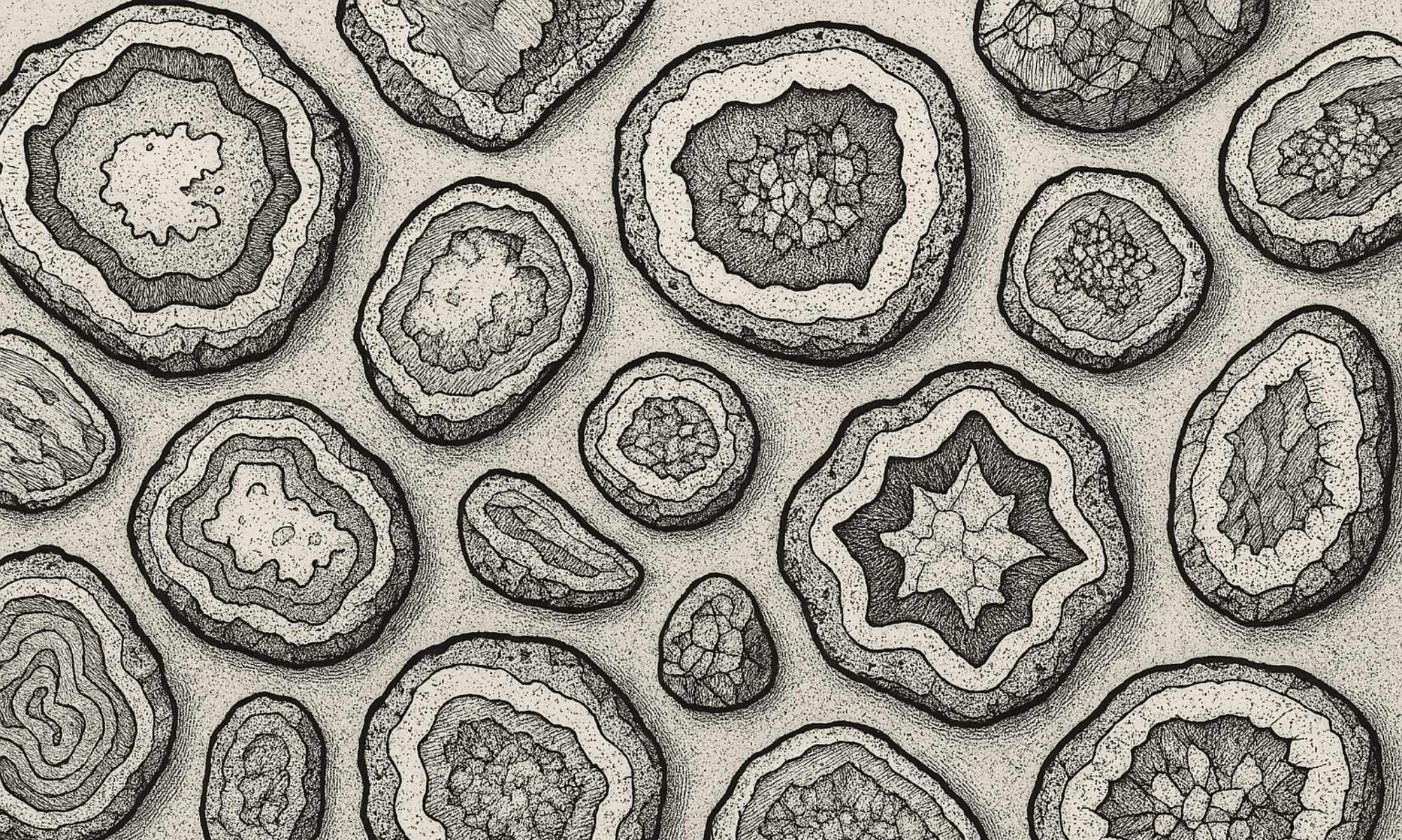Oregon Thundereggs: The Crown Jewels of American Rockhounding
If you’ve spent any time in the world of rockhounding or lapidary arts, you’ve heard the name whispered with reverence: Oregon thundereggs. These legendary nodules aren’t just the official state rock of Oregon—they’re considered some of the finest, most varied, and most collectible thundereggs on Earth.
From the sunburned Ochoco Mountains to the windswept desert of the Maury Mountains, Oregon’s volcanic past has gifted us a stunning array of geological treasures that are as wild as the landscape they came from.
What Makes Oregon Thundereggs So Special?
Thundereggs are spherical to irregular nodules that form in rhyolite lava flows. As volcanic gases created cavities, silica-rich fluids slowly seeped in, crystallizing over millions of years into agate, jasper, chalcedony, and sometimes even opal. Oregon thundereggs are particularly prized for their:
- Wide variety of colors and textures
- Dense rhyolite shells with striking contrasts
- Plume, moss, and sagenite inclusions
- Fortification banding and starburst patterns
- Sizes ranging from golf ball to basketball!
No two Oregon thundereggs are alike—and that’s exactly the magic.
Famous Oregon Thunderegg Locations
Oregon has dozens of classic thunderegg beds, many of which are still actively collected or dug by hand. Each one has its own unique “signature” based on the local mineral content and volcanic history:
Richardson Ranch (Madras, OR)
One of the most iconic locations, this site offers beds with lavender, blue, red, and mossy agates. Some have complex internal patterns and are highly sought after by collectors worldwide.
Opal Butte
A legendary site in Eastern Oregon known for producing eggs with opal centers—some of it precious opal with play-of-color. Many are filled with translucent pastel hues.
Ochoco Mountains (Priday Ranch, Lucky Strike, etc.)
Perhaps the most famous concentration of thunderegg beds. Priday Plume agate is known for its fiery red and orange plumes, while Lucky Strike eggs often feature strong fortification agate and vivid colors.
Maury Mountains
These produce classic “starburst” pattern thundereggs with bold white and brown contrast, often with druzy quartz centers.
Wilderness and Private Claims
Many lesser-known beds lie scattered across Central and Eastern Oregon, often on BLM land or private property accessible by permission. Some produce tiny, vividly colored eggs—others, large, gnarly nodules filled with smoky quartz or jasper.
Rockhounding in Oregon: What You Need to Know
- Land Access: Many dig sites are on private land or require permits. Always check before digging!
- Dig Your Own: Richardson Ranch, Lucky Strike, and a few others offer fee digs where you can fill a bucket or three.
- Seasonal Access: High desert roads can become impassable in winter or spring—plan for dry season trips (late spring to early fall).
- Gear Up: A rock pick, shovel, gloves, and buckets are essential. Thundereggs don’t always come out clean—many need cutting to reveal the good stuff.
Lapidary Potential
Oregon thundereggs are dense, often high-grade material that cuts beautifully. Popular uses include:
- Book-matched display slabs
- Cabochons with scenic moss or plume agate
- Whole or half polished nodules for collectors
- Unique freeform sculptures
Cutting thundereggs is part science, part gamble—every slab is a surprise.
The Story Behind the Name
According to Native American legend, thunder spirits living in Oregon’s mountains hurled these stones at each other during storms—hence the name thundereggs. The story is fitting: they’re as dramatic and untamed as the landscape they come from.
Oregon Thundereggs: A Rockhound’s Rite of Passage
There’s something deeply satisfying about finding or cutting your first Oregon thunderegg. Maybe it’s the thrill of mystery—the outer shell giving no hint of what lies inside. Maybe it’s the connection to the land, where lava once flowed and left behind nature’s own geodes. Or maybe it’s the sheer artistry each one holds.
Whether you’re collecting them, cutting them, or selling them, Oregon thundereggs aren’t just rocks—they’re relics of fire, time, and chance. And no lapidary journey is complete without them.
